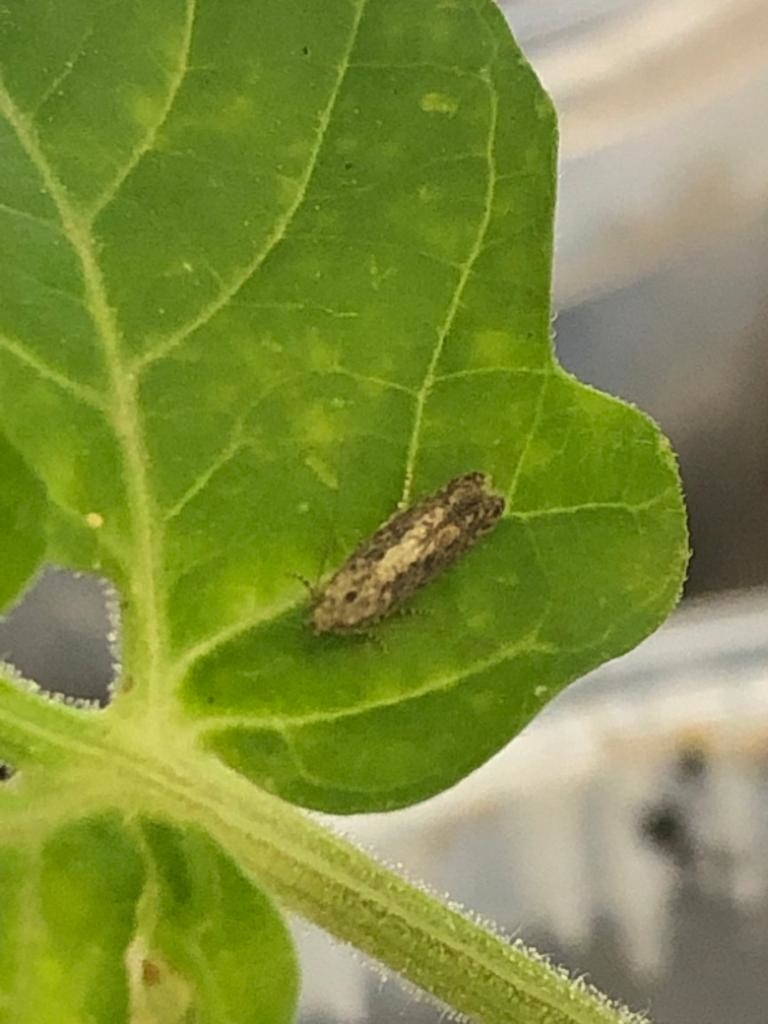
Scientists of the subsidiary organization of the "National agrarian science and educational center" JSC - Zhazken Zhiembayev Kazakh Research Institute for Plant Protection and Quarantine informed about the South American tomato moth (Tuta absoluta Povolny) in the crops of tomatoes of Kazakhstan and measures of protection against it.
KazRIPPQ is the only specialized institution in Kazakhstan that carries out important in strategic, environmental, economic and social terms the search for ways to increase the effectiveness of scientific research in the field of plant protection and quarantine.
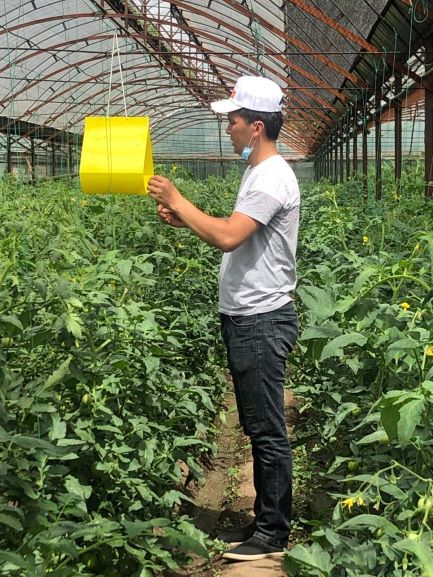
Current problem in the production of tomatoes, especially in protected ground conditions, is the massive spread of Tuta absoluta Povolny, established in the republic as a quarantine species. Already in the first years of the detection of phytophagous in tomato crops, some farms suffered serious crop losses. Inspection of tomato plantations, both open and closed ground, carried out by employees of the Institute, it was found that the pest is widespread in the conditions of Turkestan, Zhambyl, Aktobe, and in recent years in the Almaty regions of the country. The obtained data of the survey results showed that in greenhouse farms, for example, in the South Kazakhstan region (farm "Jabai ata", "Koktem", "Zhana Konys") and other tomatoes were populated by the pest by 80-100%.
Taking into account the foregoing, the leadership of the institute set the task for the laboratory of beneficial arthropods to promptly develop a set of preliminary preventive measures against Tuta absoluta Povolny. To resolve the issue of introducing an integrated, biologized system for protecting tomatoes from moths, a transfer of effective chemical and biological remedies was organized. Since the issues of the system of biosecurity of vegetable crops in the republic are practically not developed, the staff of the institute carried out a transfer of entomophages of macrolophus (Macrolophus nubilus) and nesidiocoris (Nesidiocoris tenuis), which are recommended as effective predators against pests of vegetable crops [1, 2]. In a short time, the methods of keeping and mass breeding of predators were mastered.
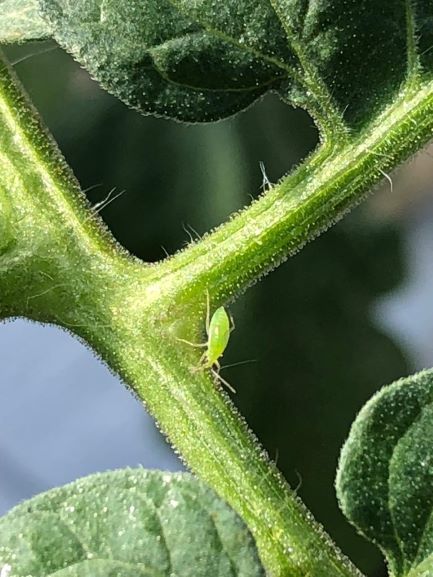
Having mastered all the technological cycles of entomophage breeding in laboratory conditions, it became possible to establish their production in quantity, taking into account the availability of laboratory areas of the institute, and to carry out trial colonization against Tuta absoluta Povolny in small areas of the greenhouse. At the same time, insecticides with a prolonged effect, which are of little danger to the useful fauna, were tested.
For the tests, preparations were taken Koragen and emamectin benzoate, 50 g / kg + lufenuron, 400 g / kg. The test results showed that the Koragen preparation, when applied at rates of 0.140 g / ha and 0.315 g / ha, provided high biological effectiveness against moths, amounting to 94.1 ± 0.3 and 96.4 ± 0.7%, respectively.
Bioinsecticide Entolek, which is distinguished by the absence of negative impact on human health and the environment, also showed high efficiency against Tuta absoluta Povolny. A biopesticide based on fungi and bacteria in combination with avermectin showed high mortality of tomato moth caterpillars. With 100% colonization of plants with tomato moth, the mortality of caterpillars in the variant with Entolek on the 3rd day was 82%, on the 5th and 7th days - 98%.
Various types of pheromone traps have also been tested for use in a comprehensive Tuta absoluta Povolny control system.
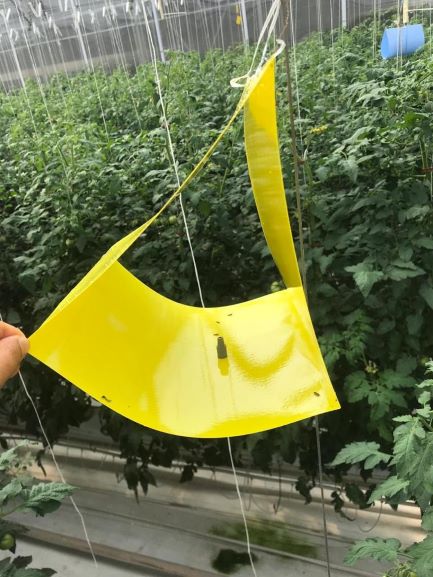
The results of the work carried out, which are related to the transfer of entomophages, the development of the method of their mass reproduction, the testing of low-hazard insecticides and the use of pheromone traps, gave positive results. Therefore, in 2019, an agreement was concluded with the greenhouse farm "Naimbekov" in Shymkent to conduct an industrial check of the recommended protective measures against tomato moth on an area of 2 hectares. In January, with the beginning of the crop rotation, monitoring was carried out to establish the population of plants with Tuta absoluta Povolny. Of the examined 50 plants, 9 specimens of tomato moth caterpillars were identified. Therefore, in an expeditious manner, it was decided to process the plants with a solution of the drug Koragen, at the rate of 0.03% concentration by subsoil (root) application. At the same time, 10 pheromone traps per hectare were hung on the plants. The conducted counts of pheromone traps revealed the presence in them of 25 individuals of the pest imago. At the beginning of February 10 traps were additionally exposed and the release of nesidiocoris was carried out at the rate of 0.5 individuals per sq. m. Fertilizing of the bioagent was carried out using eggs of the sitotroga. At the beginning of March, the number of pheromone traps throughout the greenhouse area was brought to 30 pieces and at the same time the repeated release of macrolofus and nesidiocoris was carried out at the rate of 1.0 individuals per sq.m. If at the beginning of the culture turnover, 25 imago moths were found in ten pheromone traps, then in February only 15, and at the end of March there were only 5 individuals in 30 traps. The monitoring of moth colonization of plants revealed only isolated cases of damage by phytophage to tomato leaves. The creative collaboration with the aforementioned farm continued in 2020.
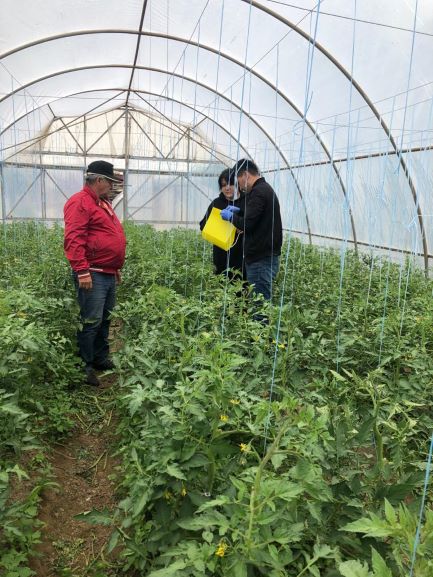
From the preliminary experience of applying a complex of protective measures, incl. biological means, it can be concluded that the most important period of moth control is the beginning of the culture turnover, when the pest begins to lay eggs and hatch caterpillars. The use of the drug Koragen at this time, which has both ovicidal and larvicidal action, besides, its prolonged effect significantly limits the development of the pest. At the same time, the use of pheromone traps during this period, the release of nesidiocoris and macrolophus, did not allow the tomato moth, in our experience, to obtain a mass colonization of plants. The biological effectiveness of the performed complex of protective measures was 98%.
The introduction of the recommended biologic system of tomato protection using the entomophages of macrofolus and nesidiocoris, pheromone traps and single use at the beginning of the culture turnover of the low-hazard biopesticide for useful fauna and humans, Koragen, allowed to exclude the practice of annual 10-12 repeated chemical treatments and to obtain environmentally friendly products.
Currently, in the laboratory of useful arthropods of the Institute, 9 types of bioagents are kept in laboratory, which can ensure the suppression of a complex of pests of vegetable crops in protected ground. These are Nesidiocoris tenuis, Macrolophus nubilus, Harmonia axyridis, Chrysopa carnea, Orius laevigatus, Aphidius colemani, Ambliseius swirskii, Podisus maculiventris, Phytoseiulus persimilis. Sitotroga cerealella line for obtaining moth eggs as food for predators. Therefore, in order to preserve people's health, we strongly recommend that vegetable producers switch to a biological method of protection, as is the case in developed countries that are concerned about the health of their population. In this regard, we note that in the absence of proper control from the relevant state structures of our country, after 10-12 repeated chemical treatments, toxic residues of pesticides, as a rule, remain in products, and vegetables, nevertheless, are sold to the population. The presence of pesticide residues exceeding 10 times the permissible norms was revealed by the studies of the toxicology laboratory of the institute, in the samples of fruit and vegetable products selected in supermarkets in Almaty with the participation of journalists from the “Karavan” newspaper (dated 21.06.18).
Chadinova Aizhan Mukashevna
Head of the Laboratory of Biological Plant Protection


